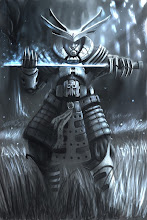
Poster explaining the characteristics of Postmodernism
(google images)Postmodernism the world, influences,style and designer
Characteristics of Postmodernism
There is no absolute truth
Truth and error are synonymous
Traditional authority is false and corrupt
Disillusionment with modernism
Morality is personal
Globalization
All religions are valid
Liberal ethics
Pro-environmentalism
To understand postmodernism we must look at what came before. “Modernism”
was loosely used to describe many “Modern” things.... from the latest gadgets to
a style of art. It also refers to a range of cultural ideas, beliefs and the artifacts
that were produced during this period. Modernists believed that science had
shaken the foundations of traditional authorities and truths. It presupposed that
an understanding of human identity and self that was unified,coherent, and
autonomous: man was a thinking being capable of rationally perceiving, knowing,
and conquering the world... and he would.

Poster from the Postmodernist Period (google images)
Postmodernism like Modernism rejects all boundaries. This rejection includes
the boundaries between different forms of art.
The postmodernist focuses on a de-structured, de-centered humanity. This
means that the idea of disorder and fragmentation which were previously seen as
negative qualities are now seen as acceptable representation of reality by
postmodernists. They also accept that the possibility ambiguity> things and
events can have two different meanings at the same time. Postmodern thought
is, an adventure and an expression life experience. It is an attempt to question
the world that we see around us and not to take other peopleʼs views as the final
truth. It puts everything into question and radically interrogates them.
Postmodernism with all its complexity and excesses is an attempt to find the new
and more truthful versions of the world
Postmodernism in graphic design has been a visual and decorative movement. It
appears to be a continuation or the re-evaluation of the modern. It seems that
this re-evaluation is also just a component of the graphic design process.
Postmodernism saw a massive popular raising at the end of the seventies in the
form of Graffiti and Hip Hop culture. Graphic forms of expression became a
hobby amongst school children all around the developed western countries. This
phenomenon worked as a stepping stone towards the graphic infrastructure that
is applied to the majority of computer interfaces today

"Early Moses" Painting by the artist Basquiat.
(google images)Jean-Michael Basquiat catapulted from being an unknown graffiti writer to becoming one of the most successful, controversial and glamorous artists in the world.

Painting by Basquiat
(google images)
Reebok Sneakers designed by Basquiat


 http://www.metmuseum.org/TOAH/HD/pica/hd_pica.htm .
http://www.metmuseum.org/TOAH/HD/pica/hd_pica.htm .










































